Last updated: October 26, 2021
Article
Caribou: Did You Know?
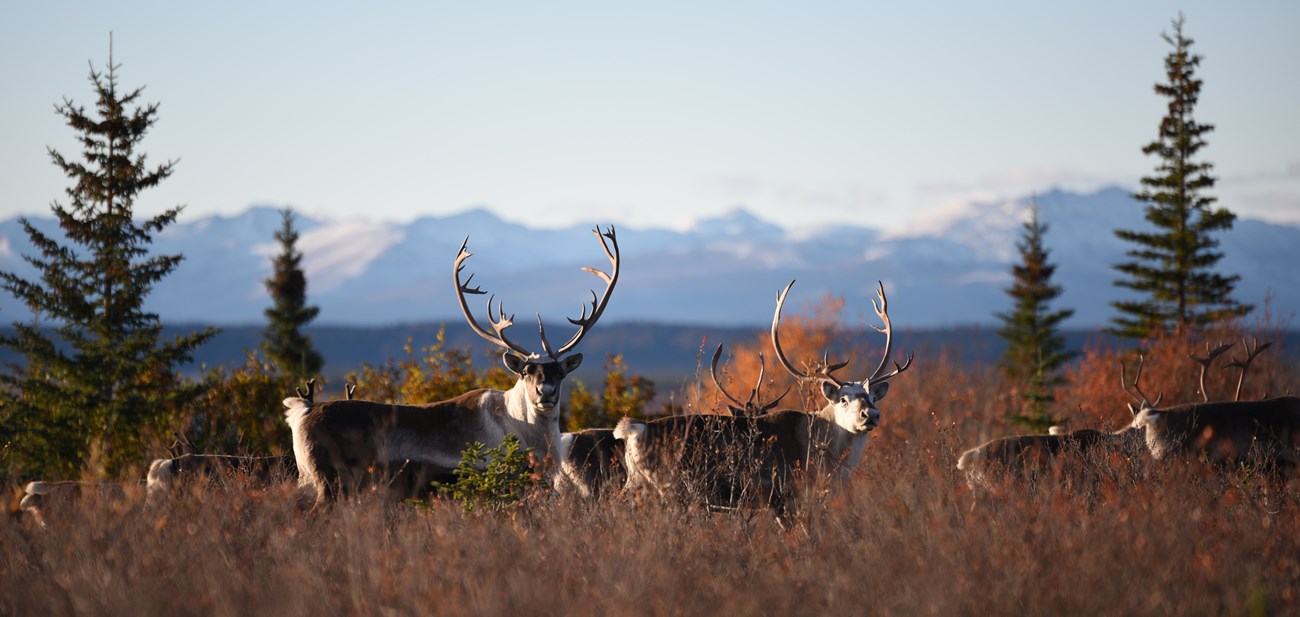
NPS/Matt Cameron
What’s in a name?
Caribou have long been a vital resource to Alaska Natives of this area. Their Iñupiaq name is tuttu [too-too], and their scientific name is Rangifer tarandus.
A summer of pests
Which weighs more: the 17 trillion mosquitoes or 950 thousand caribou in the state of Alaska? Scientists estimate there are 96 million pounds of mosquitoes compared to 230 million pounds of caribou.2 A caribou can lose about 4.4 pounds of blood to mosquitoes each year!3
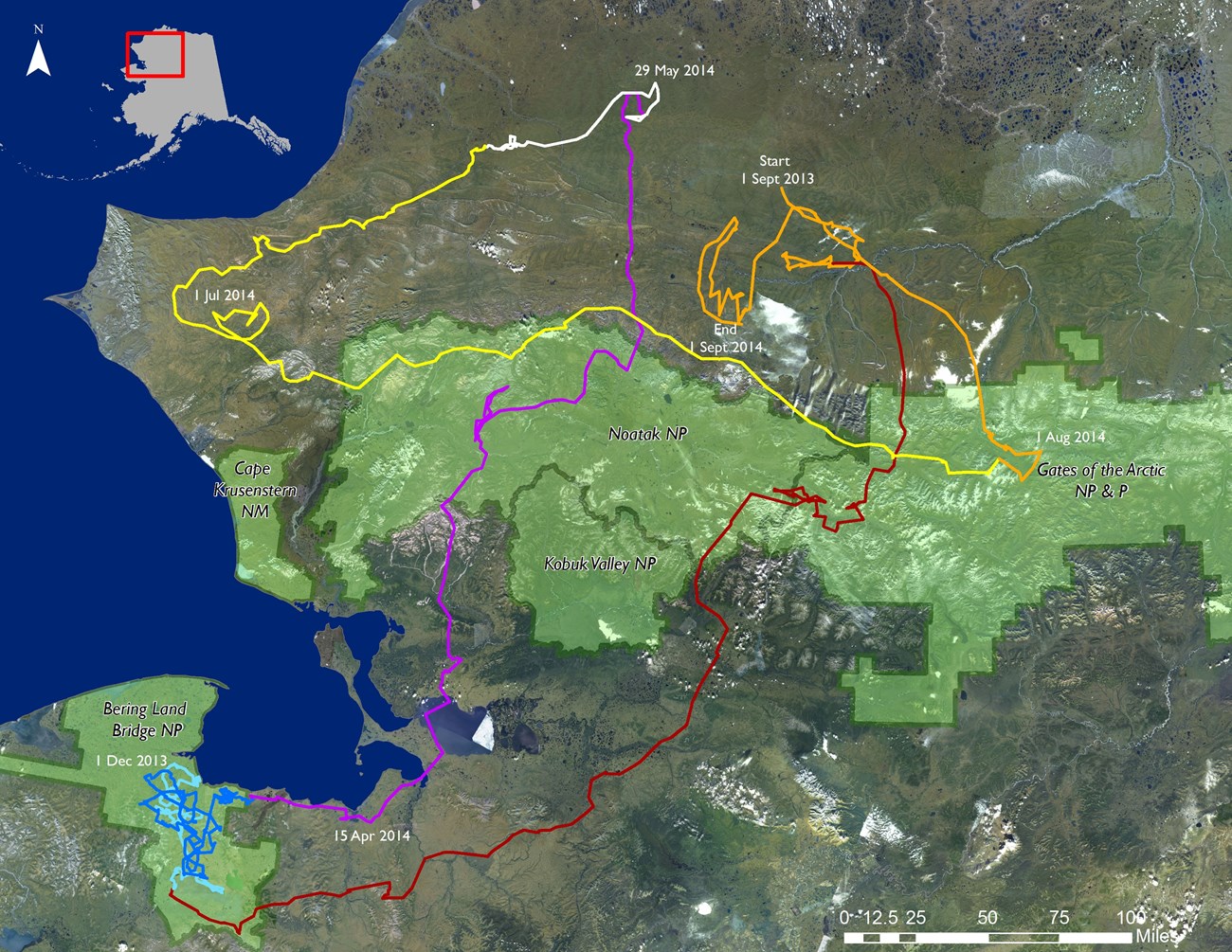
Western Arctic Herd caribou walk an average of 2,000 miles per year. The longest recorded movement of a Western Arctic Herd female caribou that NPS biologists have monitored was 2,700 miles.
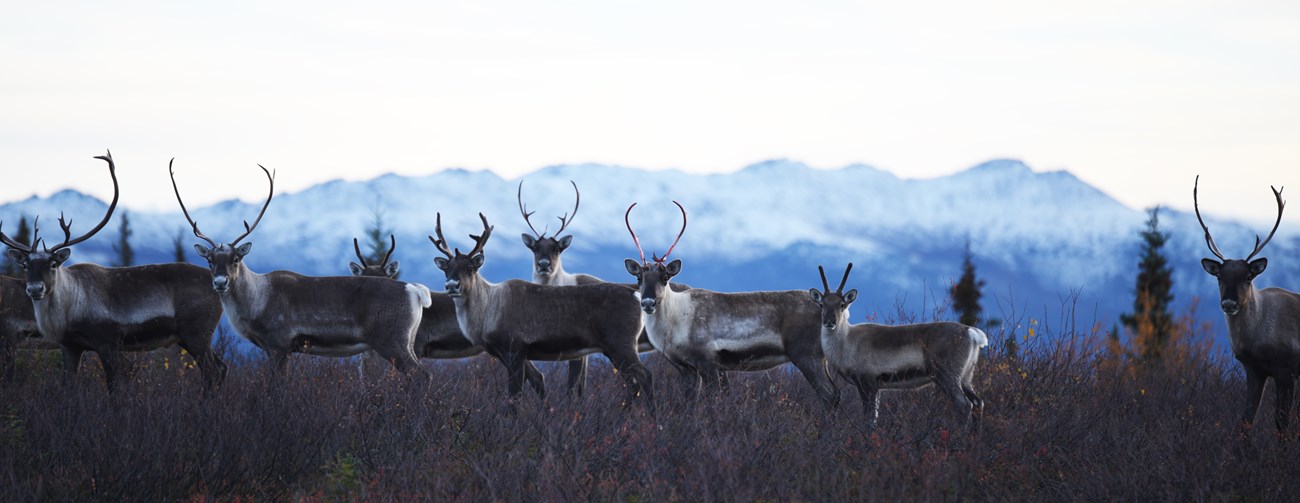
NPS/Matt Cameron
Calves are typically born during a three week period from late May to mid-June. Just two days after birth, they can travel over 10 miles per day. Within six weeks, antlers begin to grow!4
Unique antlers
Unlike most members of the deer family, both males and females grow antlers. Adult male caribou shed their antlers after the rut in late fall, but females can keep their antlers all winter. Antlers of captive female reindeer (domestic caribou) average 3 pounds and can weigh up to 7 pounds. Antlers of males weigh an average of 17 pounds and can reach 29 pounds!5
A dynamic population
The Western Arctic Herd is one of the largest caribou herds in Alaska and the world. In 2003, the herd was estimated to have 490,000 individuals,6 and in 2016, the herd count decreased to 201,000.7 Caribou populations naturally fluctuate on 40-70 year cycles.8
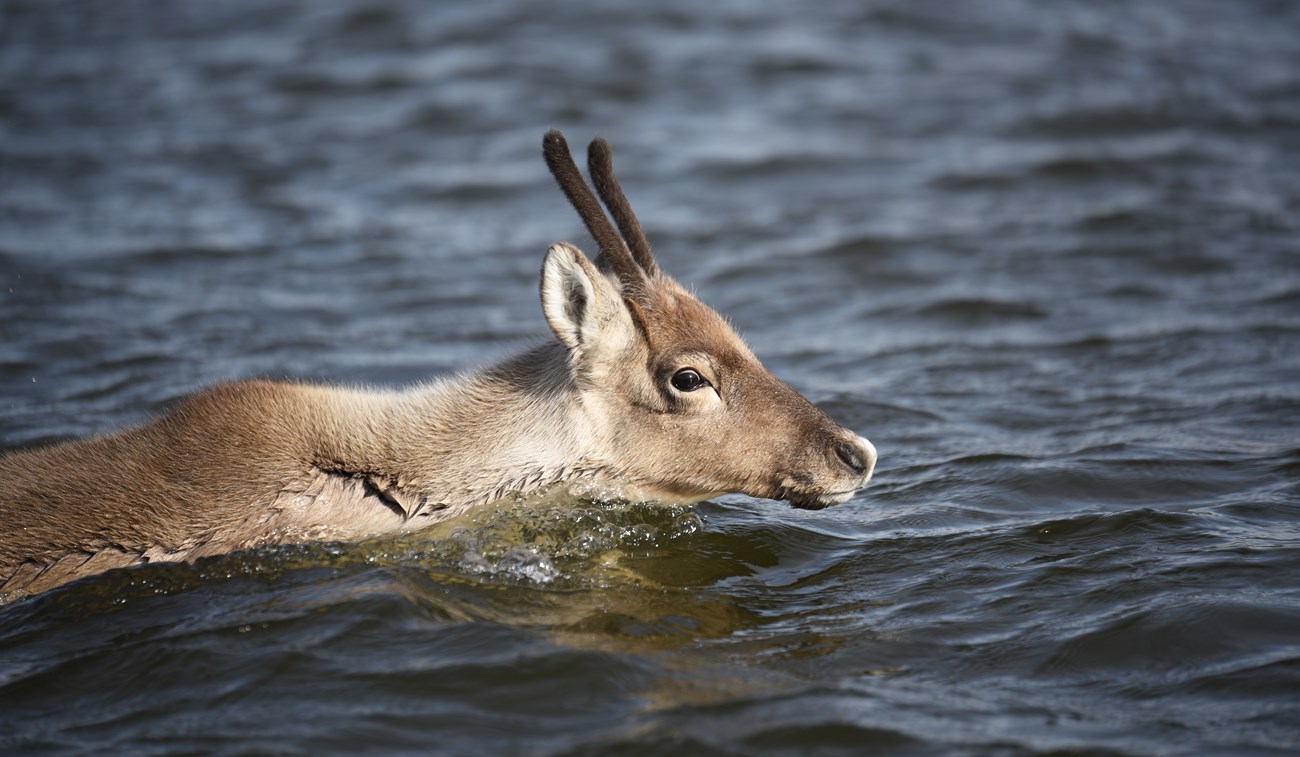
NPS/Matt Cameron
Caribou of the Western Arctic Herd have been documented crossing 35 miles of sea ice in Kotzebue Sound from the Seward Peninsula to Cape Krusenstern National Monument during spring migration.9
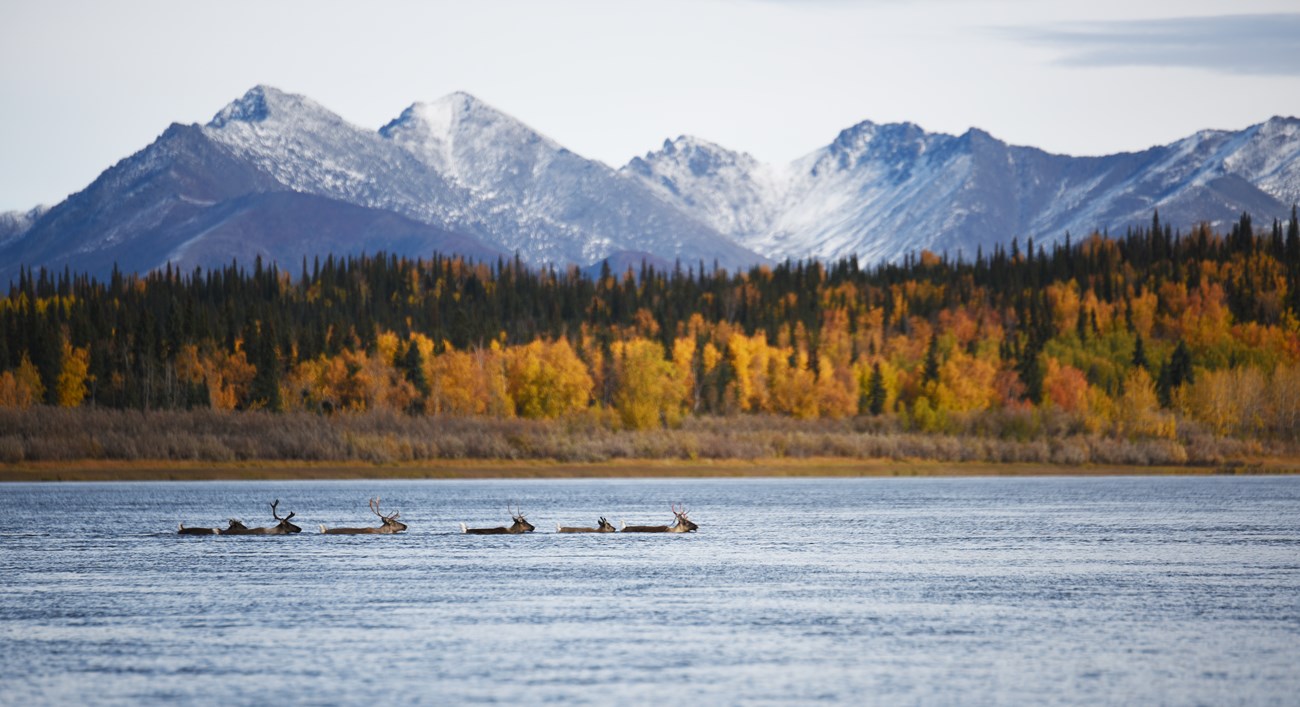
NPS/Matt Cameron
Caribou are amazing swimmers thanks to their buoyant, hollow hair and wide hooves. Adults are known to swim as fast as six miles per hour.10 In northern Canada, adults and two-month-old calves have been documented swimming between islands that are 1.5 miles apart.11
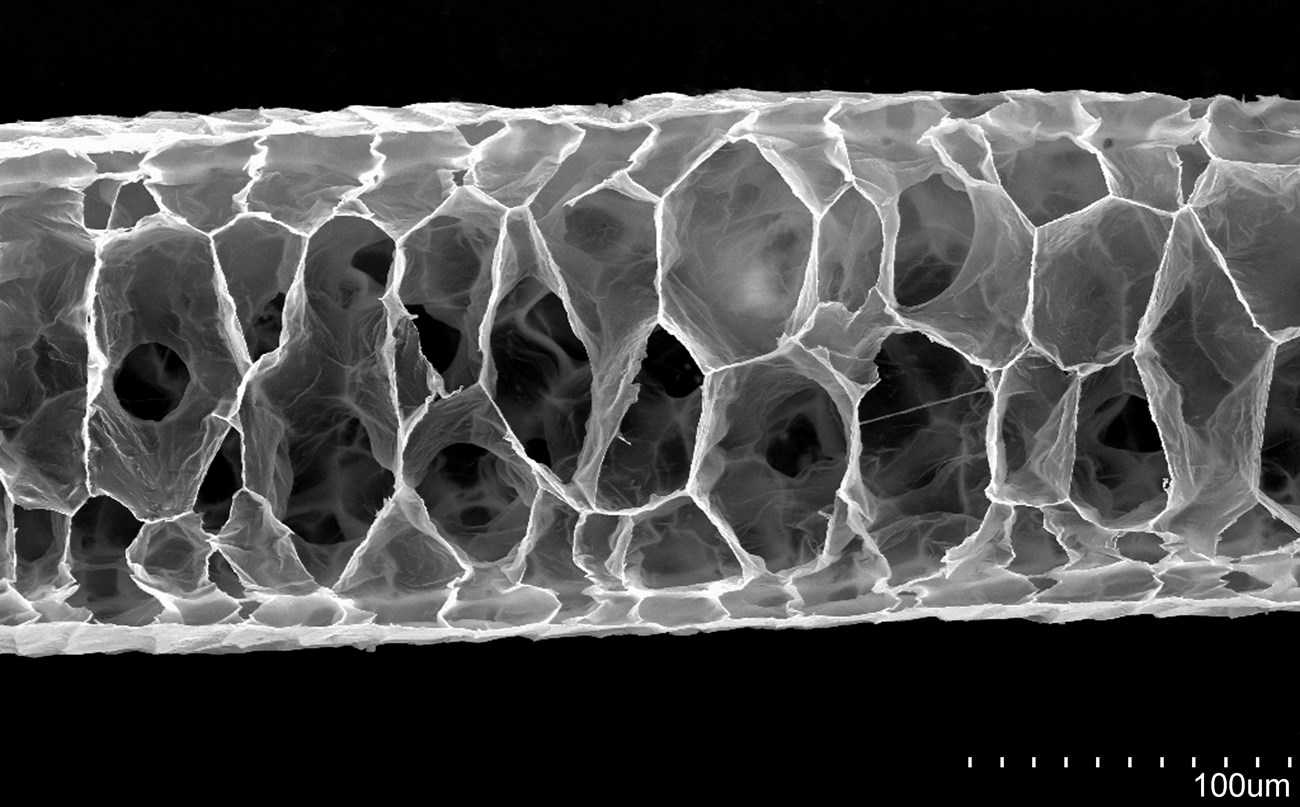
Meeks, N.D. and Cartwright, C.R. 2005. Caribou and seal hair: examination by scanning electron microscopy In J.C.H. King, B. Pauksztat and R. Storrie (eds.) Arctic Clothing, The British Museum Press, London; 42-44
1. Joly, K. and Cameron, M. D. 2015. Caribou vital sign annual report for the Arctic Network Inventory and Monitoring Program: September 2014-August 2015. Natural Resource Data Series NPS/ARCN/NRDS—2015/1090. National Park Service, Fort Collins, Colorado.
2. Rozell, N. (16 May 2015) How many mosquitoes are in Alaska? 17 trillion, biologists estimate. [Newspaper article] Retrieved from http://www.newsminer.com/features/sundays/alaska_science_forum/how-many-mosquitoes-are-in-alaska-trillion-biologist-estimates/article_dd5903d2-fc15-11e4-ba74-834fc2525d20.html
3. Syroechkovskiĭ, EvgeniĭEvgenʹevich.Wild reindeer. Science Pub Inc, 1995. Print.
4. Lent, P. C. 1966. Calving and Related Social Behavior in the Barren‐Ground Caribou.ZeitschriftfürTierpsychologie,23(6), 701-756.
5. Personal communication, Erin Carr. Reindeer Research Program, University of Alaska Fairbanks School of Natural Resources and Extension. Fairbanks, 2016.
6. Dau, J. 2015. Units 21D, 22A, 22B, 22C, 22D, 22E, 23, 24 and 26A. Chapter 14, pages 14-1 through 14-89 inP. Harper, and Laura A. McCarthy, editors. Caribou management report of survey and inventory activities 1 July 2012–30 June 2014. Alaska Department of Fish and Game, Species Management Report ADF&G/DWC/SMR-2015-4, Juneau.
7. Parrett, L. (September 2016) Western Arctic Caribou Herd Update. [Magazine article] Retrieved from http://www.adfg.alaska.gov/index.cfm?adfg=wildlifenews.view_article&articles_id=794
8. Gunn, A. 2003. Voles lemmings and caribou -population cycles revisited? Rangifer(14) 23–27.
9. Joly, K. 2012. Sea ice crossing by migrating caribou, Rangifer tarandus, in Northwestern Alaska. Canadian Field-Naturalist126(3): 217–220.
10. Seton, E. T. 1927. Lives of game animals; an account of those land animals in America, north of the Mexican border, which are considered “game”, either because they have the attention of sportsmen, or receive the protection of law. Vol. III. Doubleday Page, New York.
11. Miller, F. L. 1995. Inter-island water crossings by Peary caribou, South-Central Queen Elizabeth Islands. Arctic, 48(1), 8–12.
Tags
- alaska public lands
- bering land bridge national preserve
- gates of the arctic national park & preserve
- iñupiat heritage center
- kobuk valley national park
- noatak national preserve
- caribou
- caribou migration
- wildlife
- alaska
- brooks range
- western arctic
- gates of the arctic
- gates of the arctic national park and preserve
- western arctic national parklands
- research
- biology
- biology animals
- wilderness
- wilderness alaska
- plants animals and more
- ak1
